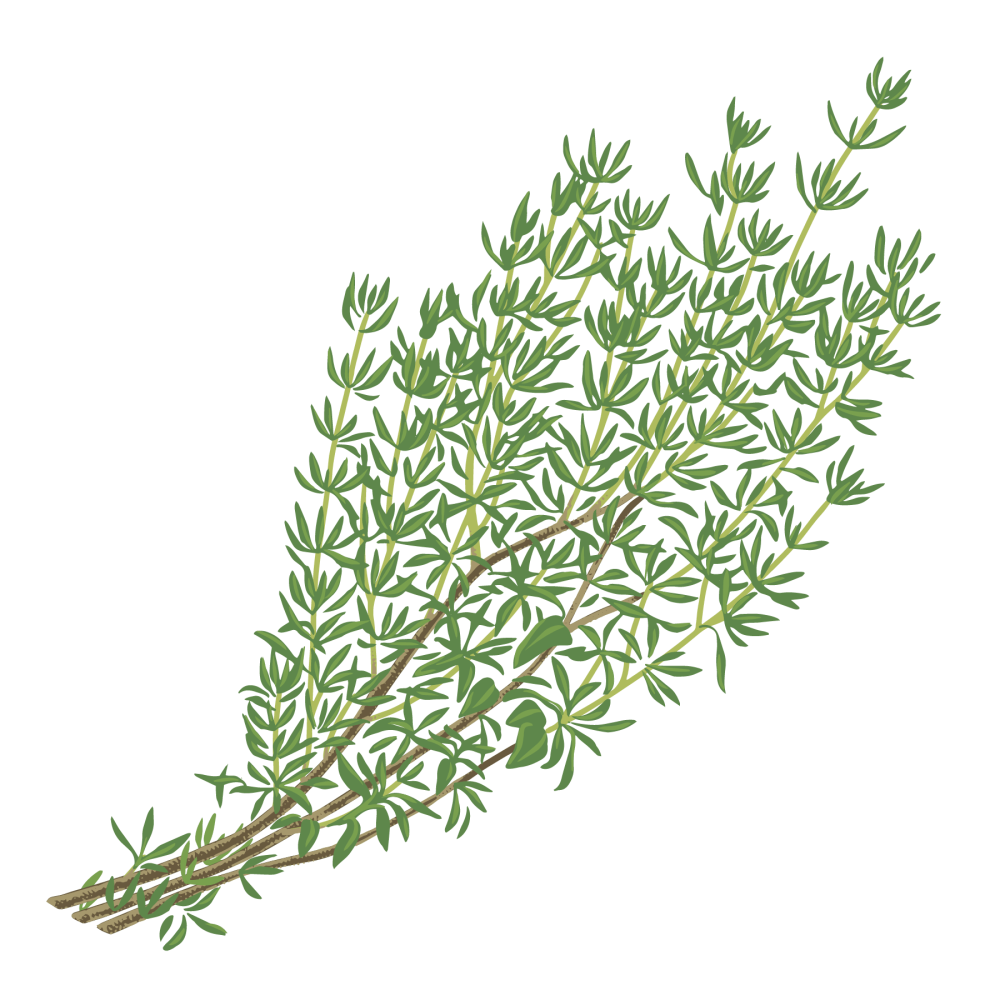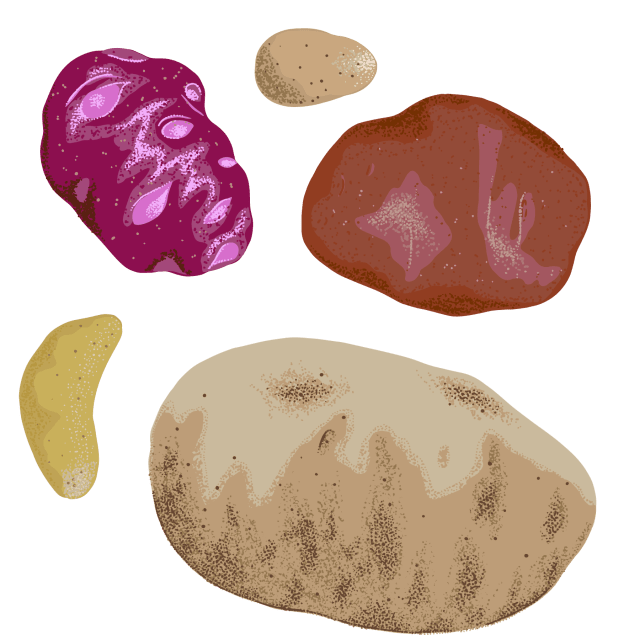Thyme

Latin name: Thymus vulgaris
Uses: fresh and dried herb, medicinal
What is thyme?
This ancient symbol of courage is a woody, aromatic herb in the mint family, used throughout the Levant and Middle East, the Mediterranean, Europe, and North Africa. Thyme essential oil is high in the compound thymol, an effective antiseptic historically used to disinfect bandages.
Why is thyme healthy?
Besides thymol’s powerful antiseptic, anti-bacterial, and anti-fungal properties, thyme has among the highest antioxidant levels of all culinary herbs. Thyme can be used to fight infections of the mouth, teeth, digestive and respiratory systems, and it is known to boost the immune system, improve mood, and help lower blood pressure.
What does thyme taste like?
Savory and slightly piney, thanks to the concentration of thymol, but with spicy notes reminiscent of grass and citrus. Different varieties have different concentrations of these flavors. Lemon thyme’s citrus flavor is more pronounced, whereas caraway thyme has a hint of that spice. Dried thyme has a more intense terpene-forward flavor and fresh thyme is more floral.
How do I use thyme?
Thyme is a primary ingredient in the aromatic Levantine spice blend za’atar, typically used as a rub for chicken, fish, and/or lamb kebabs, or mixed into ground meat for kefte. Mix thyme with olive oil and Greek yogurt to smear onto roasted vegetables and warm flatbreads. It’s a necessary component of the French blends herbes de Provence and bouquet garni. Add sprigs of thyme to melted butter and white wine for basting mushrooms and to a sheet pan of root vegetables. Don’t be afraid to add it to cocktails, too.
What does thyme pair well with?
Thyme is often combined with its relatives oregano and marjoram in Italian and Greek dishes. It loves garlic, mushrooms, pasta, and anything that wants a savory edge.
Where does thyme grow?
Today you can find thyme growing just about anywhere. Thyme is native to (and still grows wild throughout) the scrubby hillsides surrounding the Mediterranean, but it’s been cultivated in the Mediterranean and North Africa since antiquity. It’s a common potherb throughout Europe and North America, where it’ll readily take to a sunny garden spot in well-drained soils. Being a mint, it easily roots from stem cuttings as well as producing copious amounts of seed.
How to buy thyme:
The fresh herb is more fragrant but retains its flavor well when dried. If buying fresh, make sure there aren’t any brown or slimy spots where the sprigs are bound together. To grow and dry your own, harvest sprigs just beginning to bloom, then hang them in a dry, shady location until completely desiccated before stashing them in an airtight container.
Fun thyme fact:
Thyme’s medicinal uses may predate their culinary ones. Sumerian texts from 3,000 years ago mention the healing properties of thyme, and Ancient Egyptians used thyme to embalm the dead, both for its aromatic properties and because its antiseptic qualities stalled decomposition. Ancient Egyptians also used thyme in medicinal wines. Terpenoid compounds matching thyme (and other medicinal herbs) were found in urns dating back to around 5,400 BCE.





